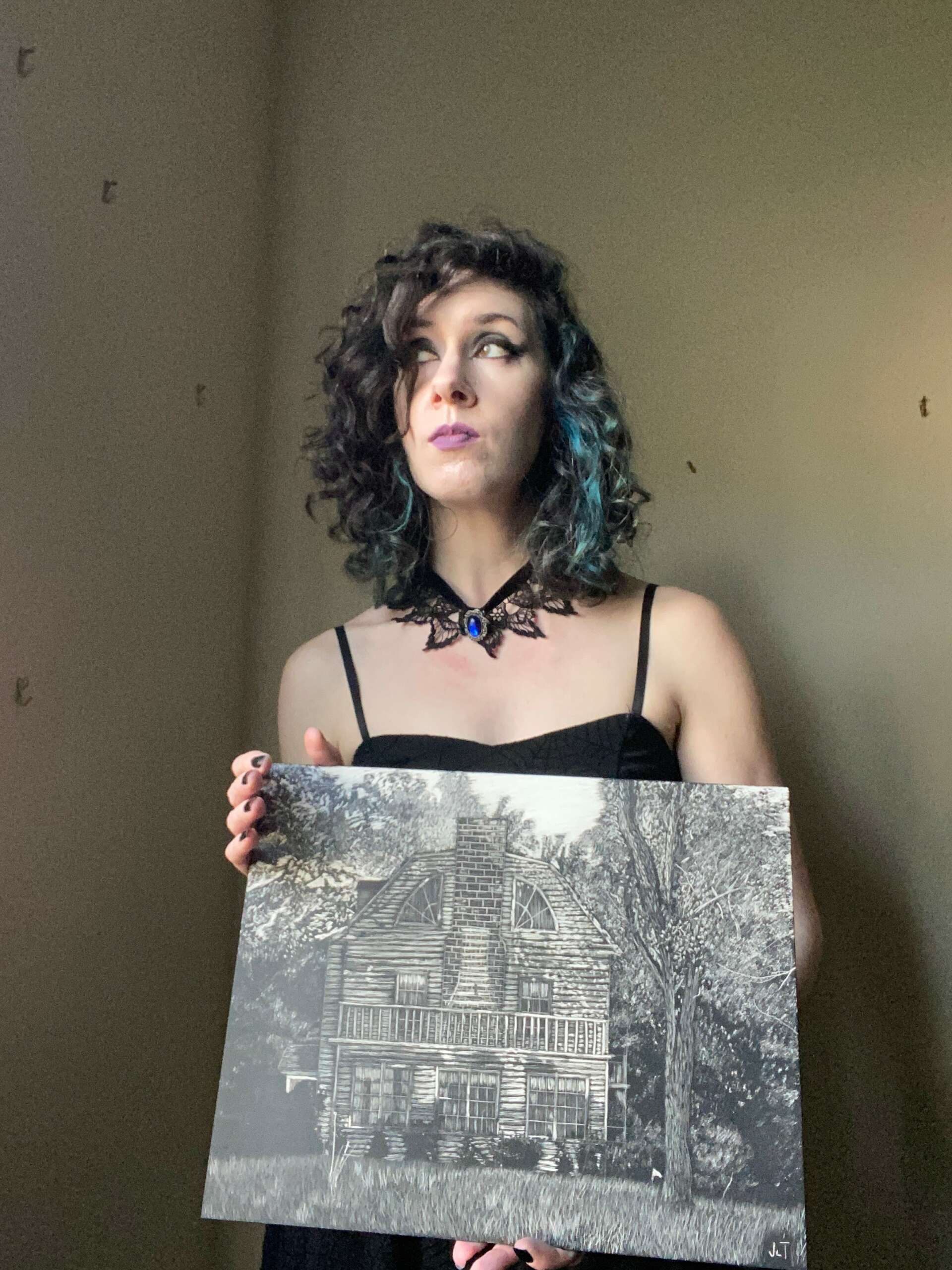We’re excited to introduce you to the always interesting and insightful Jennifer Tiedemann. We hope you’ll enjoy our conversation with Jennifer below.
Jennifer, looking forward to hearing all of your stories today. How did you learn to do what you do? Knowing what you know now, what could you have done to speed up your learning process? What skills do you think were most essential? What obstacles stood in the way of learning more?
I’m a scratchboard artist, and I’ve been working with this medium for sixteen years. I was first exposed to it in my sophomore year of high school, when my art teacher assigned a project, and I was instantly fascinated by this exercise in negative space. I start off with a black surface and use a very small knife to reveal a white layer underneath. Not too long after my first project, I got pretty sick and took a scratchboard project home to work on from the couch while I was recovering. That piece is of fallen leaves on a forest floor, where I’d painstakingly shaded each one and began to develop my style because I had too much free time on my hands. I got into my high school’s art show with it.
I only did sporadic scratchboards for the following eight years or so, still testing out many other mediums and finding my voice, but I’d always come back to it. I did a piece called “Ghost Town” in 2017 based on a building in Pioneertown California, and realized that I preferred drawing buildings, but it was stressful because it’s so precise–you can’t use an eraser on a scratchboard.
Around the same time, I took a digital art course, because that was completely unknown to me–I’d always been very hands-on with traditional media and had never learned how to create with technology. I adapted the program Procreate for my purposes and figured out how to do the same scratchboard process on a blank black canvas with a small white pen tool. I started using this to make drafts of my work, and I leaned more fully into the horror element. I started drawing the settings of horror films with this method in 2018, starting with the house from “IT: Chapter One,” and I’ve never stopped.
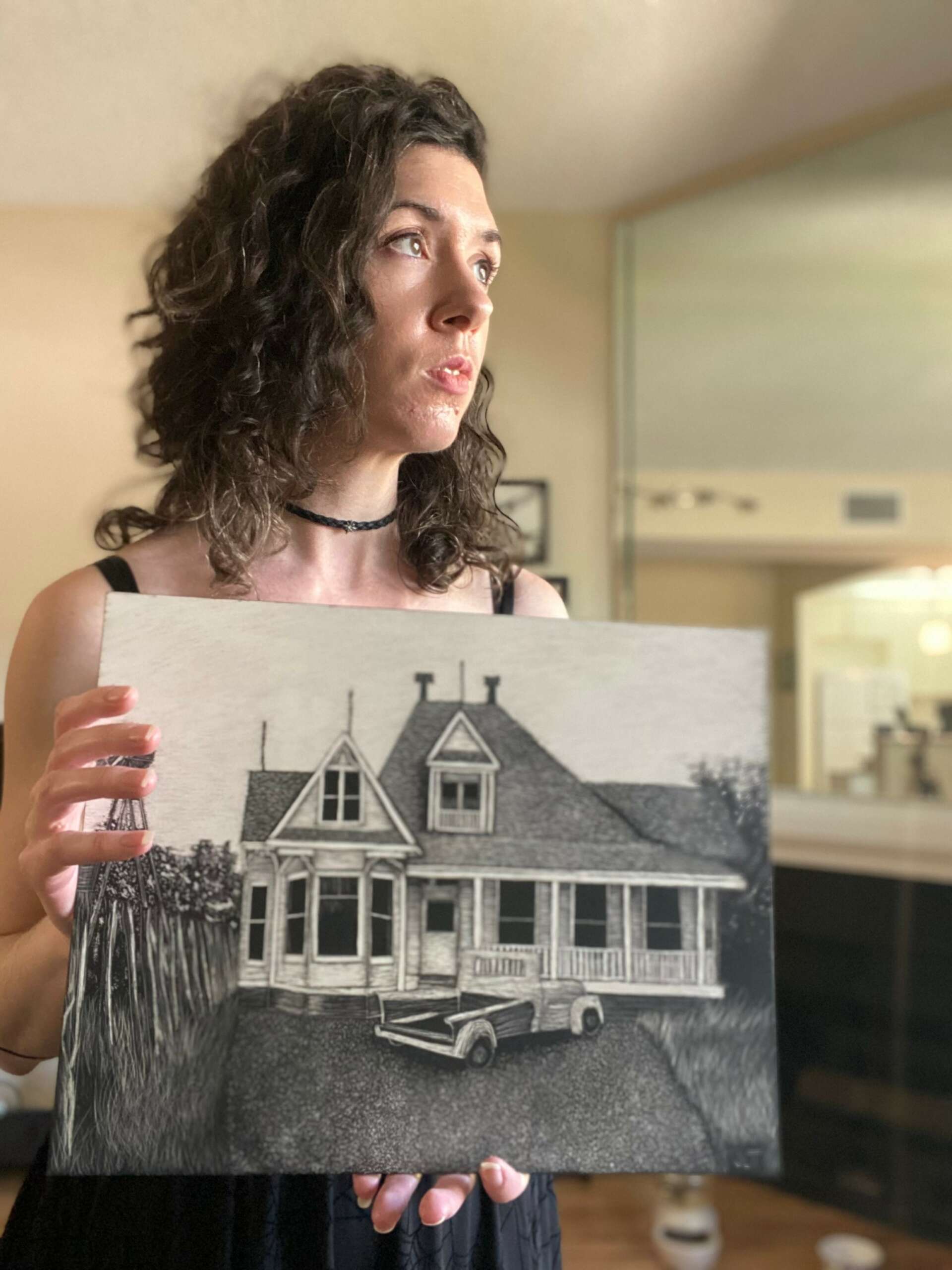


Great, appreciate you sharing that with us. Before we ask you to share more of your insights, can you take a moment to introduce yourself and how you got to where you are today to our readers.
My work draws from a love of architecture and horror movies. I’d already been doing scratchboard art for a while before I came up with the idea for my Horror House Scratchboards collection. As a longtime fan of horror media, I wanted to think of a way that I could share my artwork within this space. Not everyone knows what a scratchboard is, and by vending local events I’m drawing attention to a lesser known medium. I produce prints of my works to make them more accessible to fans of all levels, as an original takes months to produce. I work to create a cohesive collection of horror related pieces at a variety of price points, from hyper-detailed images of popular landmarks to a simple image of a mask or a prop. It’s very much ongoing, I have a long list of upcoming pieces and am also happy to take commissions. I’ll be showing my work at multiple upcoming popup horror markets and conventions this year.
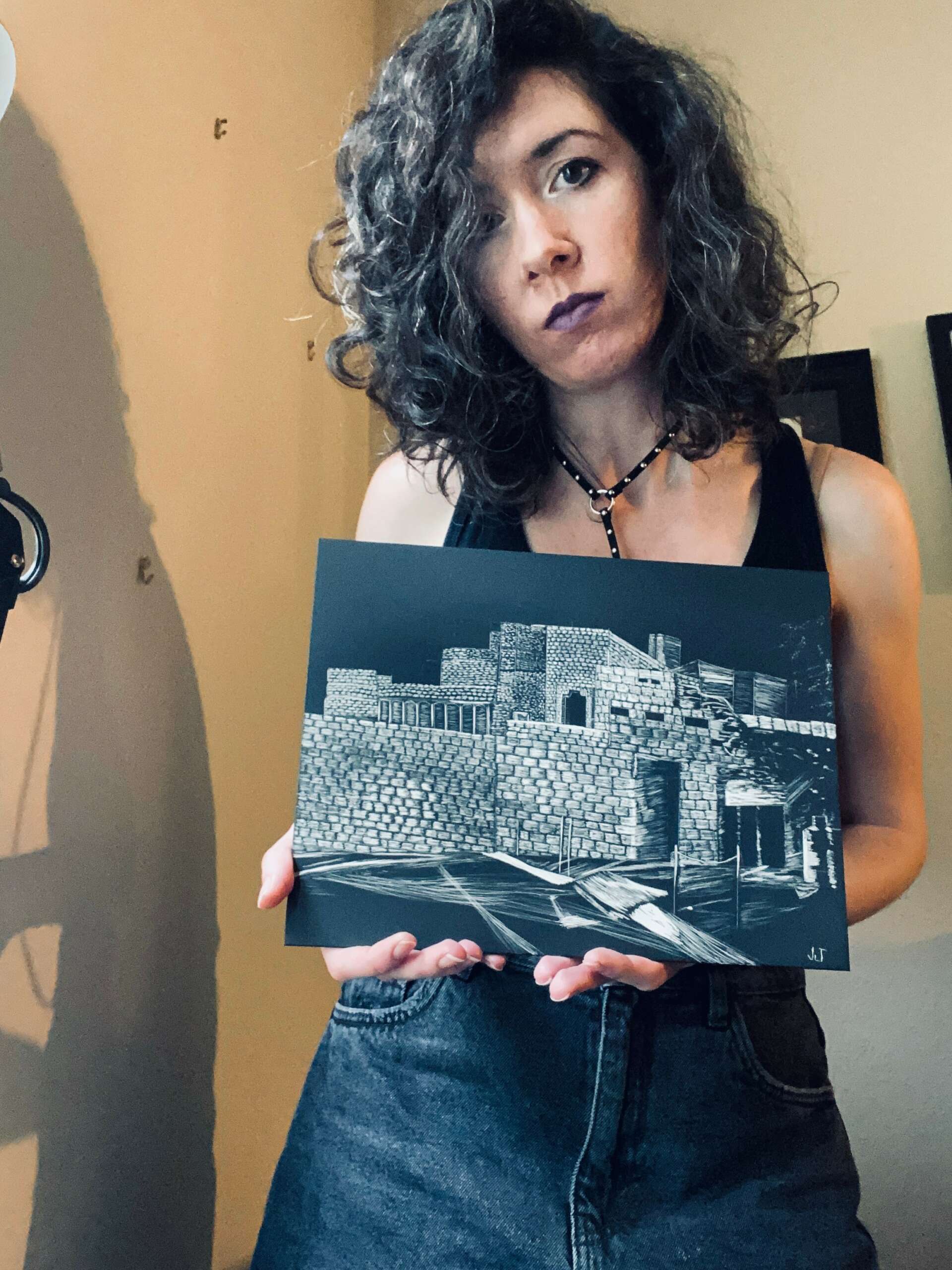

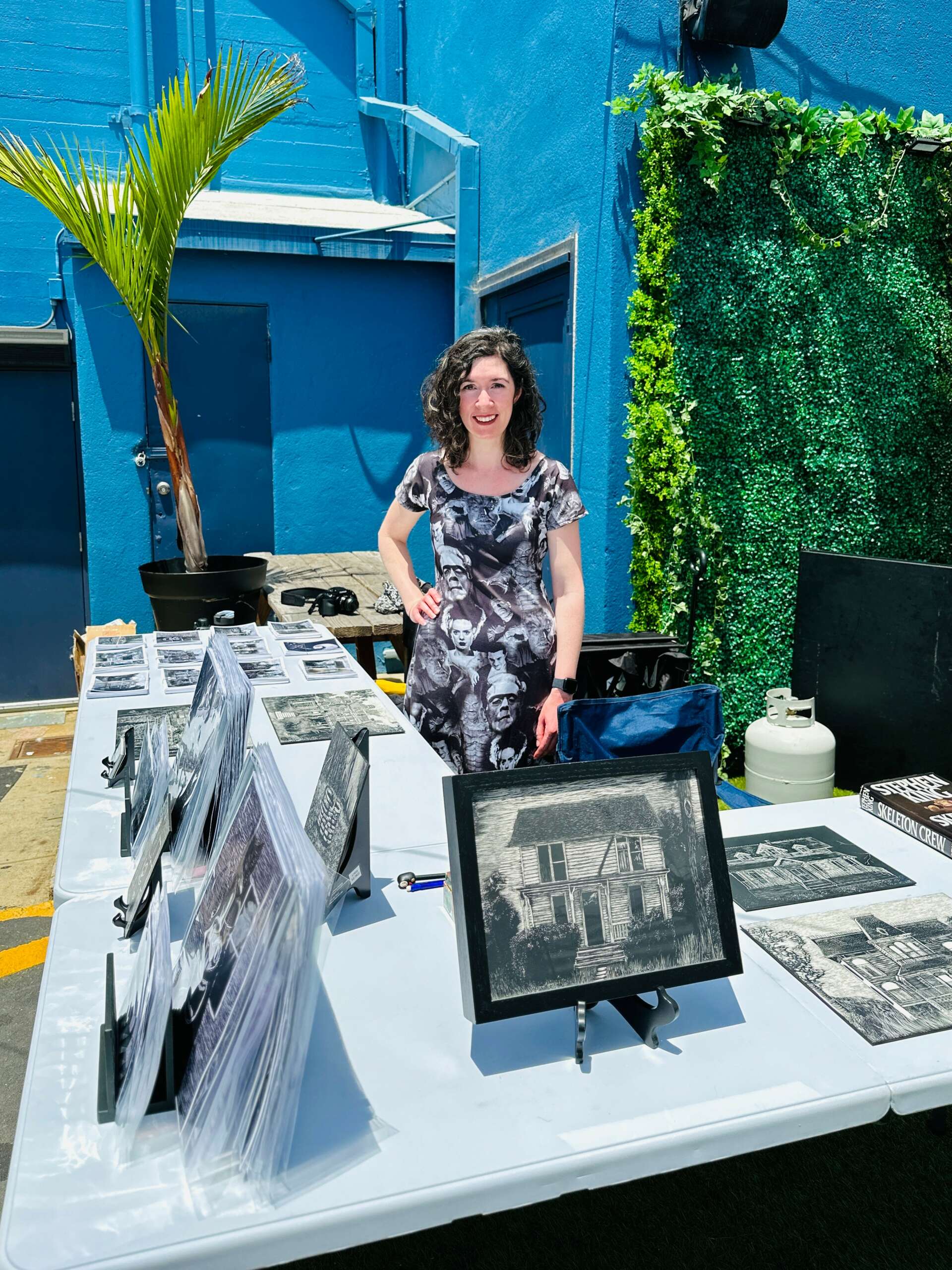
What do you find most rewarding about being a creative?
The most rewarding aspect of being a creative to me is the impact on the community. I’m simply creating something that hopefully brings joy to someone else. I seek to connect with likeminded individuals, and be part of the local network of spooky creatives. Doing that in person at events has been wonderful. I’ve gotten to talk to several kids considering pursuing their art, and I think that’s great–I love being able to encourage and inspire people to take a non-traditional path.

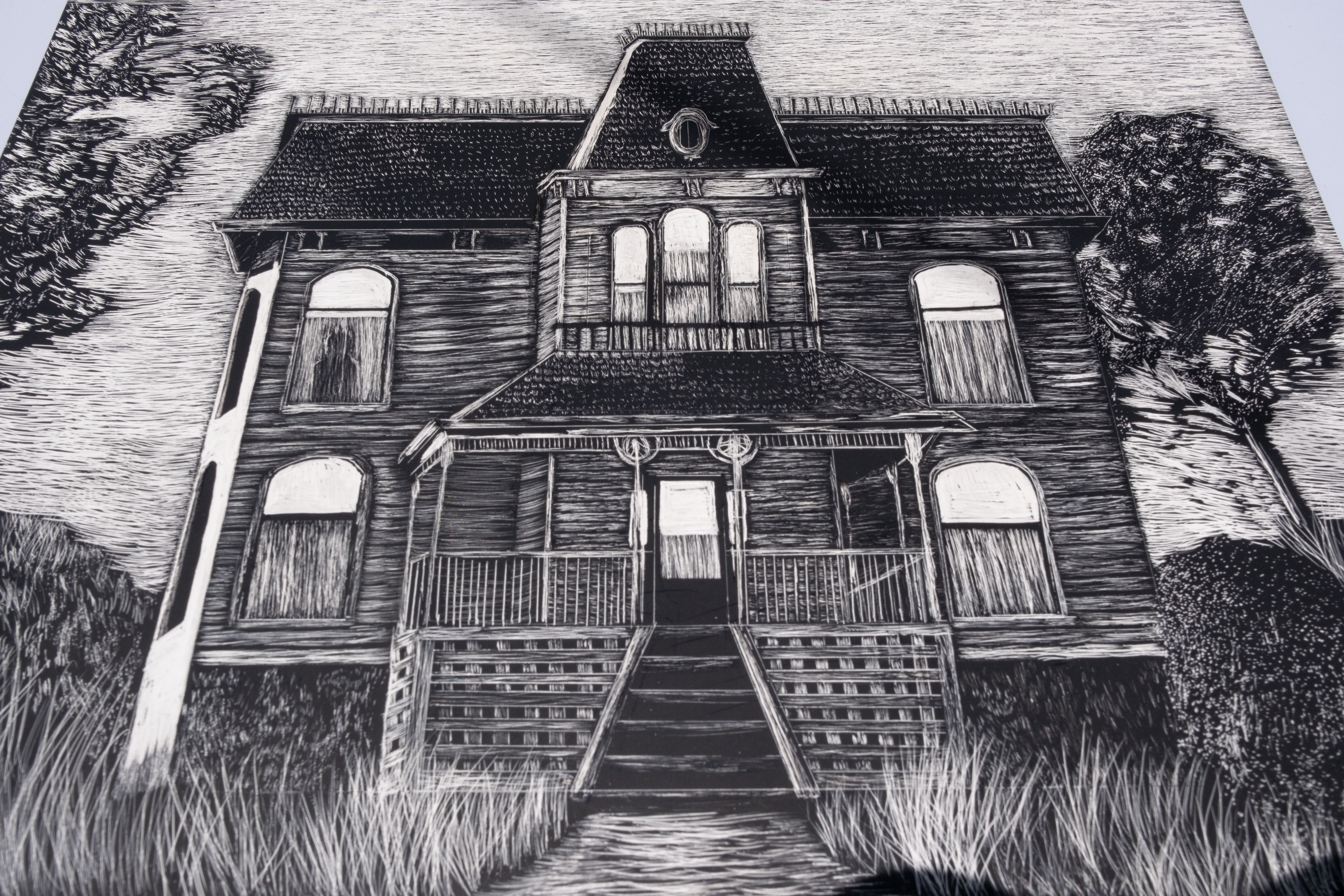
How about pivoting – can you share the story of a time you’ve had to pivot?
Originally, I wasn’t doing scratchboard art under the Horror House Scratchboards name. I was working on my dark nature series and printing them through a third party website that handled shipping and everything, and I really didn’t get much out of it. It wasn’t being seen by the audience I wanted, and the pay was only pennies on the dollar. I knew in the long term that this wasn’t going to be sustainable, and that’s when I ultimately had the idea to launch my current collection and plan to sell it at conventions.
Contact Info:
- Website: https://www.jennifertiedemann.com/horrorhousescratchboards
- Instagram: https://www.instagram.com/horrorhousescratchboards/
- Other: https://www.tiktok.com/@horrorhousescratchboards


